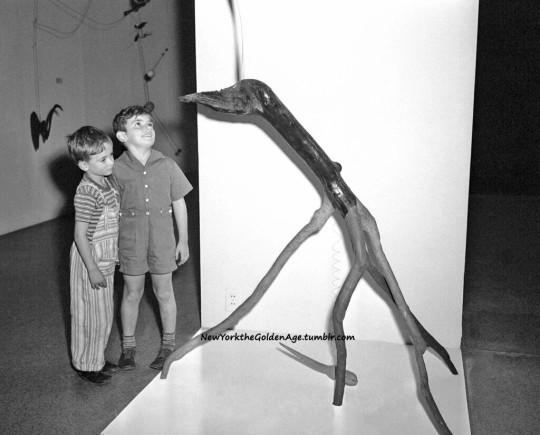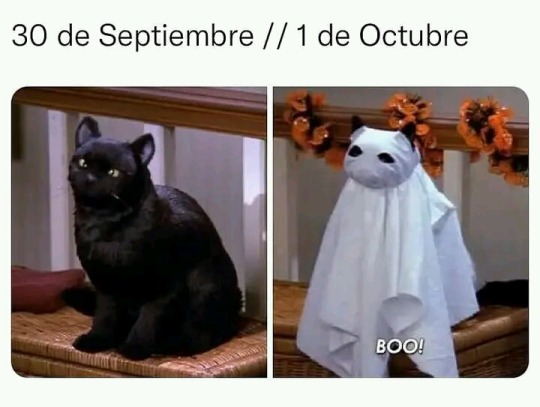#30 September
Explore tagged Tumblr posts
Text
Van Helsing & Mina: We're going to defeat Dracula with the power of friendship!
Quincey: And this gun I found!
#that’s it that's the whole book#dracula#dracula daily#re: dracula#dracula memes#bram stoker#mina harker#count dracula#abraham van helsing#dd September 30#September 30#30 September#quincey morris#quincey p morris
3K notes
·
View notes
Text
Me, listening to @re-dracula
"Content warning: this episode features the sound of a gunshot"
Oh, that'll be when Quincey tries to shoot the bat, I'll be prepared for that.
...
Oh, look. Quincey has got up and left the room for no apparent reason. I bet he's gone to shoot the bat.
...
*gunshot sounds*
Me physically jumping in shock with a little scream
Well done sound design 👏
418 notes
·
View notes
Text










The Coverups at the Uptown, Oakland, CA, 30 September 2018
#green day#green day live#billie joe armstrong#the coverups#coverups#uptown#the uptown#oakland#30 september#side projects#2018
17 notes
·
View notes
Text
In honor of today, here's this song I made on tomodachi life (lucy lives au, etc)
The pronounciation is off because my system is in spanish btw
#30 september#dracula daily#tomodachi life#the crew of light#dracula memes#memes#lucy westenra#arthur holmwood#john seward#jonathan harker#mina harker#abraham van helsing#quincey morris
26 notes
·
View notes
Text
30 September 1968

On this date, the Hunter Davies Beatles bio had a much better cover than any subsequent edition.
56 notes
·
View notes
Text
New Gaza fundraiser asks I've received (30 September)
Kholoud Abdalhadi (@kholoudfamily2, @khloodabdul-hadi-blog): Kholoud has a one-year-old daughter named Ayla who has gotten sick due to the bad conditions. Kholoud has lost her older brother in an Israeli airstrike, as well as her beloved grandfather and two of her cousins. Her husband has lost two of his older brothers. They are trying to evacuate to Qatar. (https://gofund.me/7b9894e4) (shared by 90-ghost, vetted by @/gaza-evacuation-funds) (€830 raised of €27,352 goal)
Mahmoud Kullab (@loaykolabloay): Mahmoud is in Belgium rn and is fundraising for his brother’s family in Gaza. His brother has 2 children: Zain and Lana. They are fundraising to rebuild their home which has been destroyed. (https://gofund.me/7e075326) (#106 on the @/gazavetters vetted list) (€23 raised of €100,000 goal)
Mohammed Hassouna (@mohammedjama77): Mohammed is newly married. His father has been killed in this war. Their house has been completely destroyed. They are now displaced in a tent in Nuseirat. He wishes to evacuate himself and 7 family members out of Gaza. (https://gofund.me/1f06c4d5) (#93 on the @/gazavetters vetted list) (€136 raised of €10,000 goal)
Amina Yasser (@ameenafamily): Amina and her husband Khalil have 3 children: Nasser (8), Baraa (4), and Adam (2). Khalil is a sound engineer but has lost his source of income. Their house has been destroyed and they are now living in a tent. (https://gofund.me/2e63715d) (#19 on @/gazavetters vetted list!) (€780 raised of €50,000 goal)
Hanan (@hanangaza24, @hanangaza): Hanan has 3 children: Lana (10), Abdul Karim (7), and Adam (2). Their house was bombed with them inside it. Some of them got injured but they survived. They are trying to evacuate out of Gaza. (https://gofund.me/269b7293) (shared by 90-ghost) ($2,387 USD raised of $100,000 goal)
Linda AbdalHadi (@lendaabdalhadi): Linda is 26 years old and has a degree in law. She worked as an assistant lawyer. She was pregnant with her first child when she was displaced, and due to the horrible conditions she lost her fetus. She also lost her older brother. Their house has been destroyed and she is now living in a tent with her husband.They are trying to evacuate out of Gaza. (https://gofund.me/34901cf7) (#85 on @/gazavetters vetted list!) (€362 raised of €30,000 goal)
How are gfm campaigns vetted? See here, here, here and here.
Click here for my Google Doc with my complete masterlist of all the Palestinian gfm asks I've received, updated daily (along with other verified ways to send aid to Gaza).
See post here for other verified ways to send aid to Gaza.
Don't forget your Daily Clicks on Arab.org, it's free!!! and Every click made is registered in their system and generates donation from sponsors/advertisers.
For links to my Masterlists see below
Click here for my Masterlist for fundraisers from 13 - 25 July.
Click here for my Masterlist for fundraisers from 26 -29 July.
Click here for my Masterlist for fundraisers from 30 July - 1 August.
Click here for my Masterlist for fundraisers from 2 - 5 August.
Click here for my Masterlist for fundraisers from 6 - 10 August.
Click here for my Masterlist for fundraisers from 11 - 14 August.
Click here for my Masterlist for fundraisers from 15 - 18 August
Click here for my Masterlist for fundrasiers from 19 - 21 August
Click here for my Masterlist for fundrasiers from 22 - 24 August
Click here for my Masterlist for fundraisers from 25 - 28 August
Click here for my Masterlist for fundraisers from 29 August - 1 September
Click here for my Masterlist for fundraisers from 2 - 5 September.
Click here for my Masterlist for fundraisers from 6-10 September.
Click here for my Masterlist for fundraisers from 11-14 September.
Click here for my Masterlist for fundraisers from 15-18 September.
Click here for my Masterlist for fundraisers from 19-22 September.
Click here for my Masterlist for fundraisers from 23-26 September.
#palestine#gaza#free gaza#free palestine#post has been vetted and verified#verified#gaza genocide#vetted#donations#fundraising#vetted gfm#vetted campaign#vetted fundraisers#vetted gofundme#verified fundraiser#verified gofundme#gaza fundraiser#gaza gofundme#palestine gofundme#palestine fundraiser#gaza gfm#palestine gfm#new ask#new asks#30 september
8 notes
·
View notes
Text

(advertisement in Whitaker's Almanack, 1883)
“The doctor here will bear me out that on one occasion I tried to kill him for the purpose of strengthening my vital powers by the assimilation with my own body of his life through the medium of his blood—relying, of course, upon the Scriptural phrase, ‘For the blood is the life.’ Though, indeed, the vendor of a certain nostrum has vulgarised the truism to the very point of contempt. Isn’t that true, doctor?”
(Renfield, 30 September)
8 notes
·
View notes
Text
Super delayed realization, but it just occurred to me this year that the order in which we’re reading Dracula is the same order in which Arthur and Quincey Morris read Dracula
38 notes
·
View notes
Text

Richard and Robert Tussaint seem bemused by a sculpture called "Apple Monster" at the Museum of Modern Art's Alexander Calder exhibit, September 30, 1943. The piece is made of tree branches and wire.
Photo: Ed Ford for the AP
#vintage New York#1940s#Ed Ford#Alexander Calder#sculpture#MoMA#Apple Monster#artwork#museum exhibit#September 30#Sept. 30#30 September#30 Sept.#children at museum#modern art
40 notes
·
View notes
Text
youtube
It was a 30 September…
5 notes
·
View notes
Text




Meet You There at the Fillmore, Denver
30 September 2018
Concert photos by Alden Bonecutter, poster by Andy Deluca.
#this day in 5sos history#5sos#calum hood#ashton irwin#luke hemmings#michael clifford#5 seconds of summer#2018#30 september#the fillmore#myt denver#meet you there tour#gig poster#andy deluca
31 notes
·
View notes
Text

#salem#cats 12#gatunos#black cat#gato negro#tv show#halloween#h23#noche de brujas#september 30th vs october 1st#octubre#october#locuras mias#October 1st#1 de octubre#30 September#2023
20 notes
·
View notes
Text




The Coverups at the Uptown, Oakland, CA, 30 September 2018
#green day#green day live#billie joe armstrong#coverups#the coverups#2018#oakland#uptown#the uptown#side projects#30 september
13 notes
·
View notes
Text
Another tomdachi life song in honor of today, this time about quincey shooting batas and being a cowboy (ik he's not a cowboy actually but who cares)
(again, pronounciation is off since my emulator is in spanish)
3 notes
·
View notes
Text

I stand with the indigenous peoples of Turtle Island -- and the rest of the world. ✊
5 notes
·
View notes
Text




















National Day for Truth and Reconciliation
In Canada, over 150,000 First Nations, Métis, and Inuit children were forced to attend residential schools from the 1880s to 1990s. Shortly following the country's founding in 1867, there was an effort to create a Canadian national identity. This meant that the indigenous population would have to assimilate, to the point that their culture would be eradicated. A report released in 1879 said that the only way assimilation could be accomplished would be by taking children from their parents and putting them in residential schools. The report recommended that the government work with Christian churches to open the schools. The Canadian government started funding them in 1883, with the Roman Catholic Church and the Anglican Church being the main organizations running them. The schools did away with indigenous language and culture and replaced them with English and Christianity.
There was resistance from the indigenous population, so, in 1894, the Canadian government made attendance compulsory, and gave the Royal Canadian Mounted Police the authority to take children from reservations and bring them to schools. The schools were underfunded and were rampant with diseases, forced labor, and sexual abuse. Students who spoke in their native language were beaten. When students died, their parents often weren't told about it, and the children were buried in unmarked graves. The 2015 Truth and Reconciliation Commission Report estimated that 6,000 children died while attending the schools.
In the 1950s, the Canadian government started making moves towards shutting down the schools, and they took control of the schools from the churches in 1969. There were still a few schools open in the 1980s, and the last one closed in 1996. The United Church of Canada apologized for its role in the schools in 1986, and the Anglican Church did the same in 1992. Although some Catholic organizations have offered apologies, and Pope Benedict XVI acknowledged the wrongs in 2009, as of 2021, the Catholic Church has not formally apologized.
In 2008, Canadian Prime Minister Stephen Harper apologized for the residential school system on behalf of the Canadian government, and formed the Truth and Reconciliation Commission of Canada, to get to the bottom of what had happened at the residential schools. The final report came out in 2015 and said that the residential school system inflicted "cultural genocide" against the indigenous population. The report outlined the ramifications of the schools. It found that the schools undermined parents' ability to pass along language, which led to 70% of Canada's indigenous languages being classified as endangered. It found that the residential education was deliberately poor, and led to a poorly educated indigenous population that did not make high income in adulthood, which in turn impacted the education of their children and grandchildren, continuing a deficit of education and income in indigenous communities for generations. It found that the physical and sexual abuse that residential school students experienced led to lifelong trauma, and that trauma and abuse sometimes was passed down to children and grandchildren.
The St. Joseph Mission Residential School was in operation from 1891 to 1981, in Williams Lake, British Columbia. The St. Joseph Mission Residential School Commemoration Project and Reunion organized events that were held in Williams Lake in May of 2013. The events commemorated the residential school experience, witnessed to and honored the journey of healing of the survivors and their families, and were a moment of commitment to the ongoing process of reconciliation. They were attended by former residential school students and their relatives, of the Secwepemc, Tsilhqot'in, St'at'imc, and Southern Dakelh Nations, as well as by others in the Cariboo Regional District.
Phyllis Webstad, an alumnus of the residential schools, was the spokesperson for the reunion group leading up to the May 2013 events. When she was six, her grandmother bought her a new orange shirt to wear to her first day of school. On that day, she was stripped of her clothes and the shirt was taken from her, never to be returned. Throughout her life, the color orange reminded her of the event, but also of how the school stripped her identity from her—as it did with so many other children—and how no one had cared what the feelings of her and other children were. She spent years dealing with the repercussions of her residential schooling. She shared her story at the May 2013 events, and it inspired the creation of Orange Shirt Day, which was first held on September 30th, 2013.
Orange Shirt Day facilitates global conversation on all aspects of residential schools, providing an opportunity to have meaningful discussions about their effects and legacy, which spurs reconciliation. The day reaffirms to survivors and others affected that they matter, and, aptly, the official tagline is "Every Child Matters." Orange Shirt Day reminds Canadians that the cultural experiences of all people are relevant and should be embraced and celebrated. On Orange Shirt Day, Canadians are encouraged to learn more about the residential schools and their assimilation practices. Film screenings, memorial walks, and public lectures are organized, and orange shirts are worn.
September 30th was chosen as the date for Orange Shirt Day because it was around that time of the year when children were taken to residential schools, and also because it is a fitting time of year to set forth anti-racism and anti-bullying policies for the upcoming school year. School districts, local governments, and First Nations near the Cariboo Regional District, as well as some from far away from it, have passed resolutions supporting the day. For example, the Assembly of First Nations Chiefs-in-Council passed a resolution in support of the day.
When the Truth and Reconciliation Commission Report was released in 2015, it called for a National Day for Truth and Reconciliation. In 2018, the Department of Canadian Heritage and Multiculturalism announced that it was considering creating the day as a statutory holiday to honor the legacy of residential schools. September 30th, the date of Orange Shirt Day, was chosen for it, and a bill for the day was introduced to the House of Commons by Georgina Jolibois. It was passed on March 21, 2019, but didn't make it through the Senate before the next election.
On September 29, 2020, during the next parliamentary session, a similar bill was tabled by Steven Guilbeault, Canada's Heritage Minister. On May 27, 2021, the bodies of 215 children were found in an unmarked cemetery on the grounds of the former Kamloops Indian Residential School. The House of Commons agreed to fast-track the bill the following day, and it passed by unanimous consent. The Senate passed it unanimously six days later, and on June 3rd, it received royal assent, and the National Day for Truth and Reconciliation became a federal statutory holiday. It is a paid holiday for federally regulated employees in Canada, and for some private-sector employees. Today, Orange Shirt Day and the National Day for Truth and Reconciliation coincide with each other, grapple with the same history, and have similar goals.
How to Observe Orange Shirt Day
Some ways you could take part in the day include:
Wear an orange shirt. This could spark a conversation about the residential schools.
Learn more about residential schools and their assimilation practices, perhaps by reading a book about the schools.
Check for, organize, or attend events like film screenings, memorial walks, and public lectures. Share your story or listen to the stories of others. Post pictures on social media of events you attend.
Watch Every Child Matters: Reconciliation Through Education.
Read Orange Shirt Day or another book related to Orange Shirt Day.
If you're an educator, explore the Orange Shirt Day teacher resources.
Take part in the Orange Shirt Day Design Contest.
Visit the National Centre for Truth and Reconciliation or explore its website.
Learn about similarities and differences between Canada's residential schools and those that were in the United States.
Join the Orange Shirt Day mailing list.
Donate to the Orange Shirt Society.
Source
National Day of Remembrance for Indian Boarding Schools
Exploring historical approaches to Native American education unveils impactful narratives and perspectives worth remembering.
This important event is recognized in the United States as a vital part of healing and apology for the thousands of families who were impacted by the cruel practice of removing children from their homes that took place in North America for more than 150 years.
The National Day of Remembrance for Indian Boarding Schools acts as an opportunity to honor the ongoing trauma that these actions brought on, in an effort to bring reconciliation, restoration and healing.
History of National Day of Remembrance for Indian Boarding Schools
This history of this event can be followed back to the early 1800s when caucasian government leaders in North America instituted policies against indigenous families and tribes, forcibly removing thousands of children into residential boarding schools. These schools were meant to train Native children to turn their backs on their traditional ways of life and replace them with mainstream, white, American culture.
Over the course of many decades, around 400 government funded, often church-run, Indian boarding schools were actively working to “educate” tens of thousands of native children away from their families and their familiar way of life. During these years, at least 500 deaths of Native children were reported as they endured rampant and pervasive abuse and neglect.
The National Day of Remembrance for Indian Boarding Schools was established with the purpose of bringing to light the tragedies that were caused by those who abused their authority. In addition, this day is meant to honor the deep and pervasive wounds that were inflicted by demanding that this truth be included in history books as part of the legacy of the United States.
One supporter of this day is the National Native American Boarding School Healing Coalition. This organization advocates by providing access to tools and resources for making changes and resolutions, as well as encouraging all citizens to use their voices proactively through political engagement with their representatives.
In Canada, Orange Shirt Day also known as Truth and Reconciliation Day, has been observed since 2013 and is celebrated at the same time.
How to Observe National Day of Remembrance for Indian Boarding Schools
Get involved with the National Day of Remembrance for Indian Boarding Schools in a variety of ways, including some of these:
Visit the National Museum of the American Indian
Gain more access and understanding about the plight of Native Americans in boarding schools and other arenas. Take the family to visit the Smithsonian National Museum of the American Indian in Washington DC for an important educational experience.
Learn More About Indian Boarding Schools
Because the mystery and secrets behind this important part of US history continues to be revealed, it is vital that concerned people make a difference by getting educated on the most recent information. National Day of Remembrance for Indian Boarding Schools acts as a motivation to learn more through research and reading, including books such as Kill the Indian, Save the Man by Ward Churchill (2004) or Education for Extinction by David Wallace Adams (2020).
Source
#MMIWG monument by Myrna Pokiak#Yellowknife#National Day of Remembrance for Indian Boarding Schools#Vancouver#Napa#Whitehorse#Yukon#survivors of Whitehorse Indian Mission School by Ken Anderson#Finding Peace Monument by Halain De Repentigny#Spain#USA#Portugal#Sweden#original photography#travel#vacation#St. Helena#Napa Valley#California#cityscape#Lisbon#National Day for Truth and Reconciliation#30 September#tourist attraction#NationalDayForTruthAndReconciliation#OrangeShirtDay#First Nations
2 notes
·
View notes